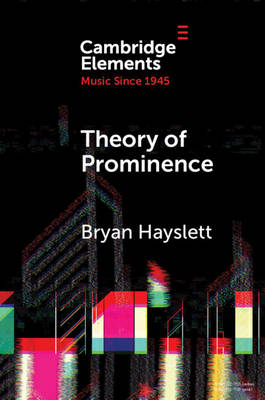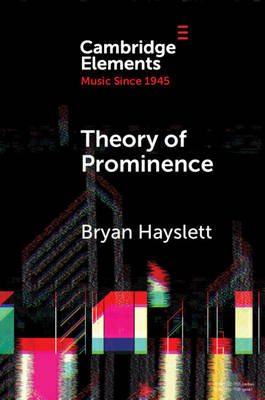
- Afhalen na 1 uur in een winkel met voorraad
- Gratis thuislevering in België vanaf € 30
- Ruim aanbod met 7 miljoen producten
- Afhalen na 1 uur in een winkel met voorraad
- Gratis thuislevering in België vanaf € 30
- Ruim aanbod met 7 miljoen producten
Zoeken
€ 31,95
+ 63 punten
Omschrijving
Many twentieth and twenty-first century composers have written music with rhythmic structures that must be understood through a framework distinct from even, periodic meter, which has been a salient musical feature of Western classical music for centuries. This Element's analytical system outlines structure and phrasing in sections of music without even perceptible meter. Instead of entrainment to meter, Bryan Hayslett theorizes that listeners perceive rhythm in similar ways to how they perceive the rhythm of language. With gesture as the smallest organizational grouping unit, his analytical system combines Fred Lerdahl and Ray Jackendoff's generative theory of tonal music with Bruce Hayes's metrical stress theory from linguistics. The listener perceives the shape of a gesture according to the structure of its constituents, and larger-level phrasing is perceived through the hierarchical relationship of gestures. After developing a set of rules, the author provides analyses that outline temporal structure according to perceptual prominence.
Specificaties
Betrokkenen
- Auteur(s):
- Uitgeverij:
Inhoud
- Aantal bladzijden:
- 75
- Taal:
- Engels
- Reeks:
Eigenschappen
- Productcode (EAN):
- 9781108813334
- Verschijningsdatum:
- 3/11/2022
- Uitvoering:
- Paperback
- Formaat:
- Trade paperback (VS)
- Afmetingen:
- 152 mm x 229 mm
- Gewicht:
- 117 g

Alleen bij Standaard Boekhandel
+ 63 punten op je klantenkaart van Standaard Boekhandel
Beoordelingen
We publiceren alleen reviews die voldoen aan de voorwaarden voor reviews. Bekijk onze voorwaarden voor reviews.











